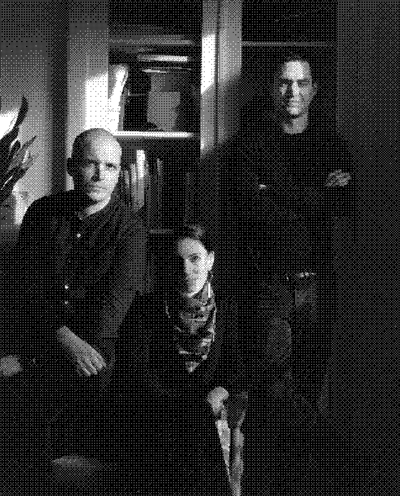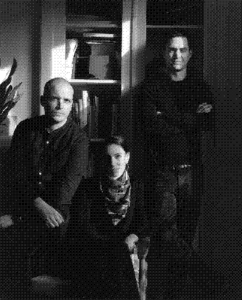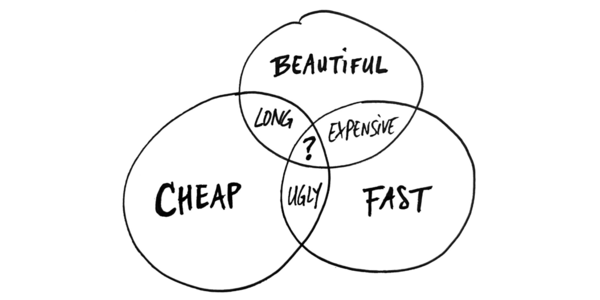Could you say a few words by way of introduction?
We launched the design studio Golgotha after graduating from the École des arts décoratifs de Paris (Ensad, Paris) in 2013. We had already used the word Golgotha in 2012 in a motion graphics project for the Chaumont International Graphic Design Festival, and for the Esaab Nevers. It was already a kind of stage name.
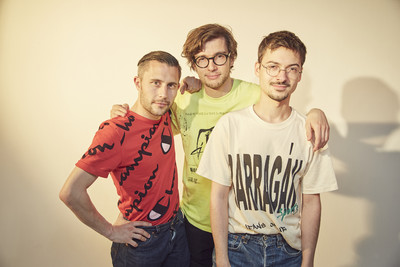
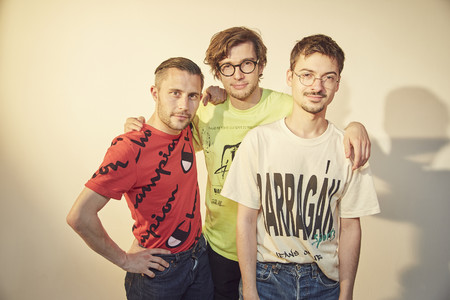
Golgotha’s co-founders. Guillaume Hugon, Antoine Aillot, Marvin De Deus Ganhitas (from left to right)
Does it mean something in particular to you?
The way it sounds. Golgotha is the hill where Jesus Christ was crucified. Legend has it that he was crucified next to two thieves. There are theories according to which it was in fact two apostles. He was in any case crucified in the presence of two other people. There is obviously something rather Christ‑like here as well as a powerful image. In Hebrew it means skull and plight. Then it entered the Bible; it’s an episode symbolizing a catastrophe.
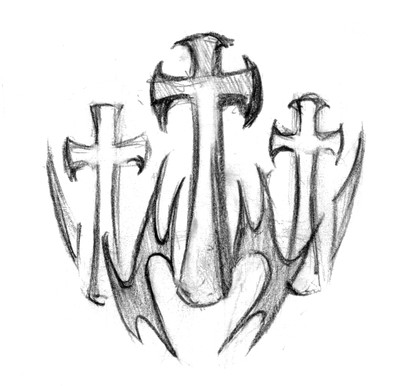
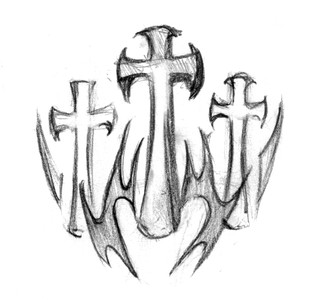
Sketch of Golgotha, by Golgotha
Do you see yourselves as catastrophes?
We probably are, in the graphic design world! No, it was impactful and we wanted something punchy.
How do you explain what you do to someone who knows nothing about graphic design, 3D, and animation?
We like to say that we’re a visual design studio. People bring us projects for logos, typographies, videos, 3D, special effects, animations, storyboards as well as art direction.
MD
Generally speaking people tend not to know a thing about graphic design. In fact, each graphic designer probably has his own personal definition. We don’t feel like we are strictly speaking graphic designers. Very early on, we broadened the scope of our activities beyond what we saw as straight up graphic design. Maybe that’s why people have a hard time understanding what we do.
GH
We work with graphic designers, we use graphic design, but we also use video, motion design, all the tools of visual creation. Sometimes we get an order for a visual identity, in which case we remain 100% graphic designers.
MD
I think we rarely said to ourselves that we were going beyond graphic design. Early on, we adopted a kind of instinctive philosophy that naturally led us to projects we liked, without necessarily being competent for the job…
GH
When we don’t know how to do something we figure out how to do it anyway. Sometimes it turns out the way we wanted, sometimes not… When a client doesn’t know exactly what he’s looking for, we either go the graphic design route, or the video route. Other times, we mix it all up.
MD
When I got out of school I didn’t immediately feel like a professional graphic designer, to tell the truth I often felt like an impostor. You have knowledge, skills, technique, all that. But what you think is graphic design is not necessarily graphic design. We might have contributed to changing things a little. But in any case the market itself changed; the demand became more wide‑ranging. People ask us for Instagram filters and I’m not sure that is the kind of thing you learn in school.
GH
Studying at Arts Décos is a long apprenticeship; you get to try out all kinds of things. In any case, that’s how I recall it. I enjoy the diversity that our multi‑tiered approach brings – design, photography, etc. These are all interesting things. But to get back to your question, generally speaking we often end up directing them to our website…


Tell me about your state of mind as of January 2021.
We’re excited. We had, much like everyone I think, a rather complicated year on a personal level. But we are still extremely lucky to have been able to work all year long, with exciting projects the whole time. In fact, just a few hours ago, some new projects showed up at our doorstep. The excitement is always tinged with a little anxiety, since it’s January. You’re starting a new year, you don’t know how things are going to go, if they’re going to take off in a flash, or not.
GH
Let’s say we are less picky now about project size. We take on all‑comers.
MD
It was hard to adapt. We had to make concessions and compromise the whole year round. We didn’t want to be left behind, so we adapted.
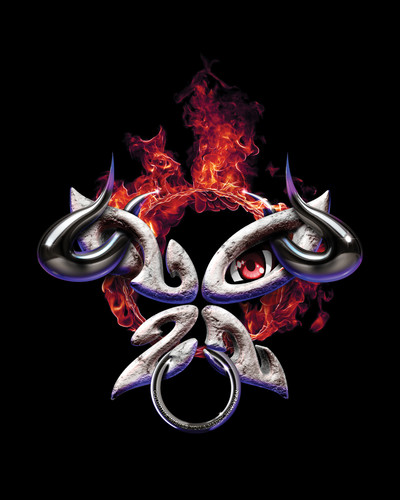
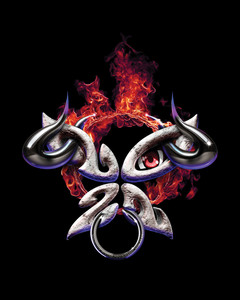
Golgotha’s new year wishes, 2021
When you launched Golgotha what were your shared visual and/or artistic influences?
In truth, Net Art was something I looked at every day. Every single day, Net Art, Tumblr, the new artists. This was via Facebook; it wasn’t easy to communicate. We shared lots of stuff: video games, blockbuster culture, movies. Graphic design too. We went to all the shows, we were all in.
What books are in your library?
There are Chaumont catalogues, issues of Étapes magazine, everything we were into in school. All these things were directly linked to graphic design, and then all the other things that came along to enrich our visual culture: graphic novels, mangas, blockbuster movies.
GH
In our library you might find a book on a collection of judges’ gavels, or the latest Nike from Maximage. We also have a book by an illustrator who only does covers for video games and magazines.
MD
There are also fun things such as the Astérix cartoons. But I think it’s symptomatic of what we like, to varying degrees. We love hardcore graphic design, historic design, contemporary things too. We like to stay abreast of what is going on in fashion magazines. We keep an eye on everything. In New York we found a set of old typographic specimens. We brought books back from Japan that I bought at Book Of.
GH
We often consult things like that. We have reference books of forms in the sense that forms are all those books contain. As well as old logos.
MD
And then there are the famous figures: we have books by Antoine+Manuel, M/M, The Designers Republic, touchstones all. Things we used to look at when we were finishing school and that we still like to look at.
Is there something going on creatively nowadays that you appreciate? Have your inspirations changed at all?
It’s always timeless. There are things that continue to inspire us, and then there are new things. Like everyone these days we are constantly glued to Instagram. It eats up a lot of our time on a daily basis. So there are loads of new references that are images rather than personalities.
GH
We have also set up a kind of permanent database for images which we update daily for our own personal use.
And how do you manage it?
It’s really a monthly thing. We’re not necessarily on Pinterest, it’s more like files on things we like. It’s all meticulously curated. Rather than let something disappear in the Internet flux, we keep in a giant archive. It’s a reference.
MD
There’s something playful about it. Each person enriches his own file.
AA
You can observe the evolution of each person’s focus in real time, it’s fun.


Bladee × Mechatok - Good Luck, 2020
So, you do this once a month?
Yeah, we’ve been doing it once a month since 2012. The aim is to conserve, really. We’re constantly aggregating stuff.
GH
Sometimes we have to go back to our 2012 files!
MD
Each project we take on goes into the database.
Is it easy to navigate?
It’s not really that well organized to be honest… (laughs)
MD
That said, there’s a touch of serendipity to the whole process, sometimes you come across old images or files that suddenly inspire you. It shines a light on a thing we were interested in at one time, this up and coming artist or that exhibition or whatever.
GH
When we go to exhibitions, we take photos and file them. The things we liked visually, things that caught our eye. I know that returning to these images inspires me.
MD
Then again, to get back to 2012, it’s true that we rapidly had a network of artists from Net Art. A person who really inspired us was Rafael Rozendaal whom we even met in Los Angeles along with many other artists.
How would you define your style?
That’s a tough ask.
GH
Some people would say that we do 3D. Others that we only make logos.
MD
We undeniably have a visual style, but it’s hard to put words on it because it’s so intuitive. It’s the fruit of our three personalities, and though we each have a lot in common, each is also quite unique. Guillaume might work alone on a project; or Antoine, and then at other times we’re all on it together. The approach naturally varies from project to project.
GH
It’s always a surprise. We like that.
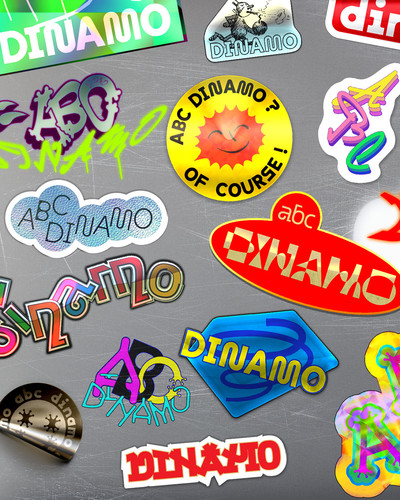

Graphic design work for Abc Dinamo, 2020
Could you describe in detail how you develop an idea? Do you have a brief, do you explore the February 2017 archives in shuffle mode?
Not really! Once we get the brief the three of us read it and then we might decide to have a meeting to talk about it. But that never happens. The effort that goes into having a brainstorming meeting is hardcore and never works. Because that’s not how creativity works. In truth, we set about thinking and solutions come rather quickly. One of us develops an idea, another bounces off of it and so on and so forth. Then we weigh the pros and cons.
MD
We have to really be doing things, we need material for an idea to emerge. An idea that appears fully formed out of nowhere, like a demigod, that never happens.
Does the winning idea emerge spontaneously, or do you debate the issue? Is there a decision‑making process?
We debate issues, but never for very long.
MD
We manage to make our own choices. Sometimes we come up with several possible solutions and let the client decide.
GH
Two competing ideas for a project sometimes turn up two different ideas, which we present to the client, who then gets to choose.
MD
Generally speaking we try to make sure that everybody is in agreement. A project is green‑lighted only when the three of us are behind it.
AA
Things have been rather fluid, I find, these last seven years.
Be that as it may, you take on a large quantity of work. Which necessarily implies a bit of organizing. How do you go about it?
It’s organic. We don’t plan it out at all.
MD
There is a total “impostor” side to what we do, still today. We get into situations that we know we have to master in order to set things in motion. In the end it comes down to a fluidity that’s impossible to break down in terms of methodology. It isn’t structured. It’s really a whole new mess each and every day.
GH
For example right now I’m working on a project, I’ve set up my team, there’s a freelancer, an intern, and me. This kind of project I either take on alone or else with a team if there’s a budget for it. Be that as it may I’m constantly going be asking Antoine and Marvin for advice on the creative process. In which case it’s all about listening and sharing advice.


So you never schedule a meeting to discuss a project?
It has happened.
GH
With the client!
MD
I remember, it was rather recently, we were in a rush, I was working solo on a project and was having a hard time keeping abreast of what was going on. So one Monday morning they gave me a breakdown of the schedule. This is the added advantage of us going back so far together. We trust each other. Antoine, for example is currently working on a project for Red Bull. Even when I’m busy and don’t have the time to look closely at what is going on, I can still be confident that things are going in the right direction. On the one hand we’re able to share and quickly agree about this or that option, and on the other each of us really trusts the other to successfully pilot a project.
GH
For example, I’m currently piloting an editorial project for a magazine. Things are going pretty well for the moment, but it may very well be that next week I’ll need their help for something. So when it’s a bigger project, when there’s a bigger budget, we usually put together a team, which means that we don’t all need to rush into it. Of course, all of this is off the table when the shit hits the fan…
A trio of creative directors is rather rare. Do you ever all three get blocked on something?
For sure, but we always manage to prevail. But it must have happened, yes.
MD
Sometimes your inspiration dries up, of course.
GH
I think that when we get blocked on a project it’s on account of not liking it too much.
MD
If one of us is uninspired or discouraged and feels like giving up, there’s always the two other dudes for support. Also, the team has expanded somewhat, we have a new talent in our orbit: Killian Loddo, who joined Golgotha a year ago as artistic director. He also happens to be an old friend. At first he was a freelancer we used on certain projects, now he’s here everyday and sometimes pilots his own projects. We have opened up our ranks, with the team also bringing ideas to the table.
GH
It’s easy with Killian, but it can be tough with outside collaborators. Someone who is more methodically inclined might take some time to get what we’re about. Now we have someone who’s supposed to take charge of production, which takes a long time to grasp. And to top it off none of us is particularly good at explaining things.
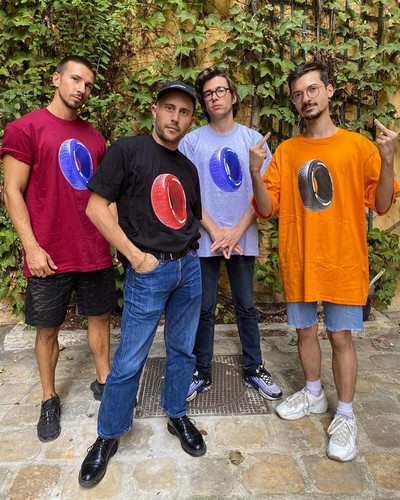

Killian Loddo, Guillaume Hugon, Antoine Aillot and Marvin de Deus Ganhitas (from left to right)
Getting someone involved in production is a rather strategic decision. How do you go about making such decisions?
For example, I used to be in charge of production. And it was a drain on my creativity. So if I can reduce that kind of work by 15%, that’s cool. It’s going on right now, we’re transferring stuff slowly but surely. All of a sudden I said to myself that I was going to try something new, not out of frustration but because it needed to be done; it’s important to have someone who really likes doing that kind of thing and who is talented.
MD
It frees up the three of us to concentrate on creative tasks.
GH
Which is the beating heart of our business.
AA
In any case we’ve been around the block, we can collaborate with folks, we know how things work.
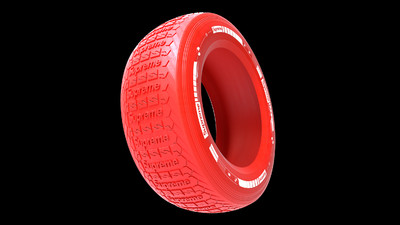
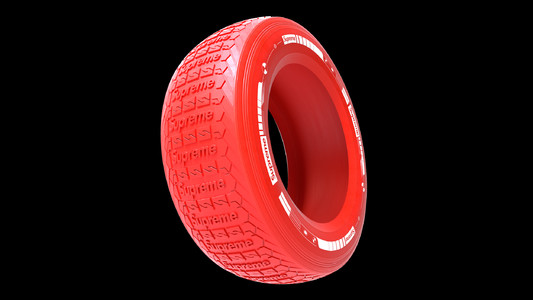
Supreme Tire Tee, 2020
Let me get back to strategy. In 2013 you already had a vision, you knew what you could become by 2020. Have you decided where you want to be in five years?
I believe we share the same vision.
MD
We have dreams but they mainly come up when we’re drunk. Because we don’t want to get carried away. I mean, simply staying afloat would be a good thing. Because you never know when you’re going to run out of steam, and we’re aware of this.
GH
We don’t want to grow too much, either.
MD
Yes, the craftsmanship side is something that we want to maintain. We don’t want to lose our identity. We know from experience that when you outsource too much your projects lose your personal stamp, they become too different from you, it’s kind of like you but not exactly. Creatively we want to call the shots, even if there have been times when we had over 10 projects going at once and were forced to outsource. Sometimes our lack of technical know‑how in a certain domain forces us to outsource. But generally speaking we’d like to stay this size; we don’t want to turn into a big agency. The idea, I think, is to be able to buy our own offices; that would be awesome. Though it may be a detail, it’s something we would like to have.
AA
And in the future maybe we could build partnerships, or at least, the very least, open a branch abroad, that would be good.
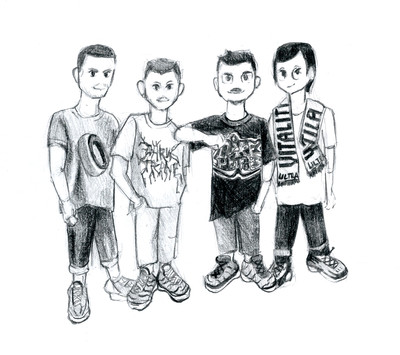
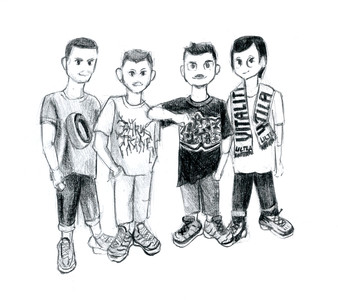
Self-portrait drawing by Gogotha
How many people does the company employ now?
Four. The three founders, and Killian Loddo. We also have a couple interns, a couple assistants.
GH
There are eight of us in all.
MD
Between seven and eight. Never less.
AA
When we’re overloaded with work we sometimes have as many as 12.
MD
Be that as it may, there’s a core of four people. Killian will stay with us, I think.
GH
We like to have our little team of interns. And then, if it’s a positive experience, we help them launch their own career.
MD
We can’t keep them, but we try to.
GH
Some come back. Victor for example.
MD
Victor Rouve, who interned with us for three or four months. Lots of folks have interned with us: Scott, who founded Area of Work for example. We are very proud of that.
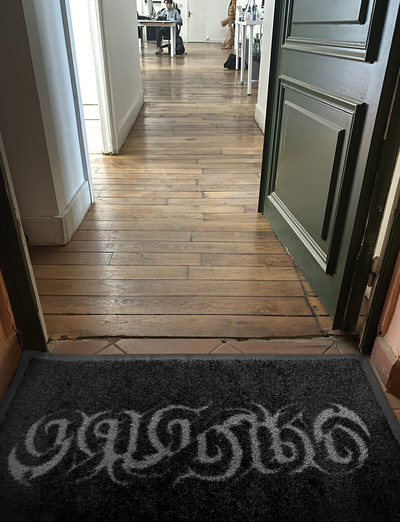

Entrance of Golgotha’s office
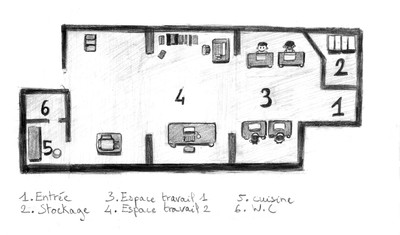
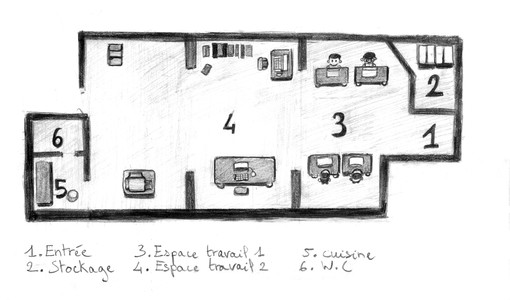
Their office plan, by Golgotha
So there is a Golgotha school?
No, though I do think we planted the seed that made them want to launch their own studio. They saw that we were successful, that it was fun to work with friends, joking around but also knowing when to be tough. And if on some level we inspired them, I find it fantastic that they found their own path.
An incubator, then.
I always love that. Take C’est Ainsi, how they arrived on the scene, you get a sense that we inspired them. And what they’re doing now is fantastic.
MD
And when we showed up in Paris we were practically the only ones doing what we were doing. It was a very closed circuit, and we were not often offered a helping hand. Which is why we like to help young talented studios emerge. We witnessed their development; it’s kind of a compassionate approach. I truly don’t have a problem with all these studios existing. There are several that have a real presence, that are beginning to taste success and have a definite dynamic.
GH
Some have developed their own identity, their inspiration, their way of working. They’ve become entities in their own right.
MD
Well, sometimes our influence is visible, but that makes us proud. In any case we do have certain sensibilities in common. And we are also happy to see graphic design changing, getting younger.
You say that you evolved organically, and a little messily. And yet, fresh out of school in 2013 you launched a company.
The company has been in existence since 2015. We started out as freelancers…
AA
With the idea of getting where we are today, more or less.
Did you already have a vision in 2013 of what you wanted to achieve?
Without knowing if we would achieve it.
GH
That’s right, but we did have a vision.
MD&AA
Yes.
GH
I thought we should launch a studio, go all out, have fun.

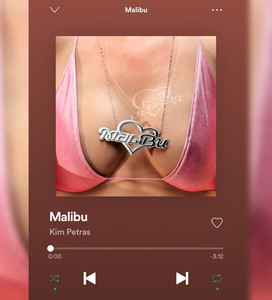
Kim Petras cover, 2020
What was your initial strategy?
In the beginning we shared offices with Novembre magazine. We produced little drawings in it, to attract new clients.
MD
I don’t think we had a strategy; it was instinctive, intuitive. We were yes men, we accepted projects all over Paris. Oftentimes we embarked headlong on shitty projects, without the slightest inkling of how we were going to manage. We learned by putting ourselves in impossible situations, including from a technical standpoint. Sometimes we didn’t know how we were supposed to do certain things. But we were effectively full of ambition and – I don’t know if I would go so far as to say we had instinct – but we did have the good fortune of meeting Florence and Nicolas from Novembre magazine. Sharing office space with them, we met lots of other folks. And things took off really fast. And it flowed into place, we didn’t say to ourselves that we were going to prospect or take on this or that project because it would be a good career move. When we arrived on the scene doing 3D, video, and typography, nobody said: “Wow, what you’re doing is super cool”. We had to be aggressive just to get an agent. Though our first agent wasn’t really a match. But let’s just say that having an agent brought us bigger and more ambitious projects.
Why doesn’t Golgotha work with an agent?
In truth, the agents we had were very nice, we got along well with them.
MD
Then we said: “Thanks, bye”.
GH
Yeah, most of the time. We did get a few extra projects over the course of a year, but we had meetings that got us nowhere. I was always afraid that it would cut us off from our clients. I like to have a direct relationship with a client, be able to talk about a project and express myself openly. I have noticed that some agents suggest certain solutions because they have been known to succeed in the past. You’re supposed to listen… But I understood early on that it was important for us to do directly what we wanted to do. If we make a mistake we make a mistake, it’s not a big deal, but at least we went for it and learned something. And then there’s also the economic aspect: the agent’s percentage… That being said, we might find the right partnership with an agent in the future, strategic, creative and financial.
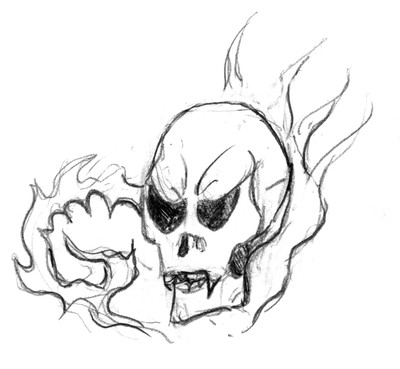
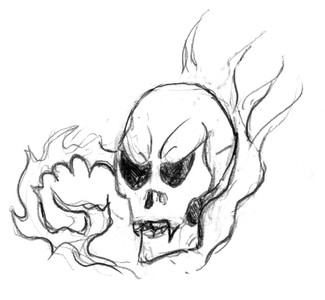
Golgotha’s illustration
You said that you started off by taking on all‑comers. Did you do any prospecting?
No, we’ve never done any prospecting, or maybe indirectly via Instagram with the end‑of‑the‑year e‑greeting cards we created and sent to people.
GH
But these were people we were already working with!
MD
Or partners. At the very beginning, we made newsletters.
GH
But we felt like we were making spam.
And how about when you set up a big event like the Golgofest?
Honestly, that was more buddies than clients. I didn’t know half the people who showed up, and most of them didn’t know who I was.
GH
It’s true that lots of people had no idea what the hell they were doing there. But it was fun.
MD
We should do another one. But to get back to the agent business, the thing that holds us back is that we don’t really fit into any known category. We’re neither film director nor photographers, which means that we were frustrated time and again by the limited scope of what we could do. And yet we were a perfect fit, except that the producers or clients didn’t get it, mainly the French ones. The French are skittish and conservative; they aren’t very adventurous. Creative directors would sometimes include us in a call for proposals as a kind of “cool” cachet; we were like the class clowns if you will, it was like: “Oh look at those weirdos sitting in the back; they’re doing a bunch of shit that nobody gets”. They dug having our proposal, but they never gave us any work.

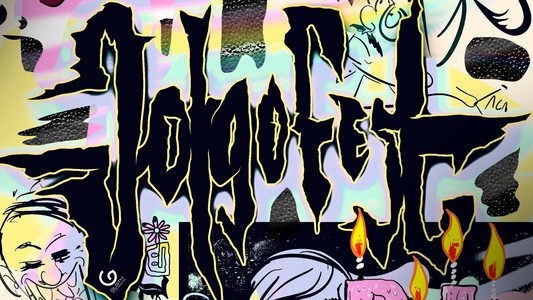
Poster detail for the Golgofest, 2017
One of the Golgofest videos
Is this also true when you pitch something, compared to your competitors? Always the outsiders?
Outsiders, I’m not so sure, but we definitely are the let’s‑go‑crazy option. Though sometimes things are a little sharper.
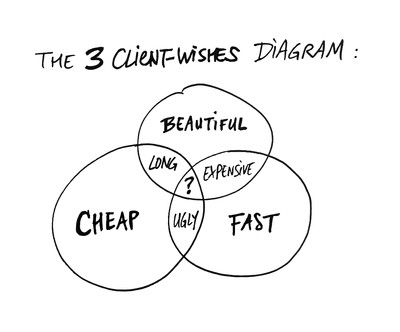

Have you ever been tempted to go about things a little more calmly sometimes?
We fucking hate pitches, man. At the end of last year we had to pitch a big project and we almost got it, we were almost in… And then they ended up telling us that what we had done was super great but too crazy. And in the meantime we had worked our asses off, for free.
GH
We wanted to show that we had worked hard, and we were capable of that. It’s supposed to be reassuring.
MD
Yeah, we often get the impression that we are the crazy option. Though the weirdo angle might escape them, they think it might somehow lead them to a good idea.
But aren’t your pitches successful sometimes?
Not often. Usually, people come to see us with a precise project in mind.
MD
We like it when there’s a bond of trust.
GH
Our pitches are seldom successful. We have in any case pitched many more projects than we have gotten.
MD
Yeah, and we do a really thorough job, with lots of pages. But it’s always dangerous to present ideas and mock‑ups in a pitch.
GH
When we pitch something we have no visibility into the backstory, what kind of budget they have, what their decision‑making process is like. It’s a mysterious thing.
And yet you’re successful. What in hindsight has worked well for you?
Perseverance quite simply. The mental fortitude necessary to totally get behind each project. And not be strictly beholden to the budget. We’re often the guys who apparently are way off in terms of budget considerations and yet who manage to fit specifications. There aren’t that many of us who are willing to take on that kind of mission. We give it all we’ve got.
GH
Once we get a job, it’s full steam ahead. We’re completely into it, you can’t be half‑assed just because all of a sudden you’ve overshot the budget. Otherwise, don’t take this kind of job!


How did you score your biggest jobs? Organically or strategically?
We had a few jobs that were game‑changers.
AA
Jobs that took us to another level.
MD
Yeah, that’s right, Retrofuture, for example, changed everything.
AA
We started getting other clients, including international ones. The Moncler job was a crucial step for us. The Liberty Living Lab was also crucial. That was when we decided to launch our company, incidentally. There’s always a client who makes you work a little bit harder; and that’s how you improve.
MD
Also, with Liberty Living Lab, there was a pitch and we were victorious, we were competing against Superscript. Retrofuture was an enormous step for us; they basically offered us an international campaign. From that moment on, our images began to be much more widely circulated. And most of all they ended up on other clients’ mood boards. It really opened us up internationally.
Do other more recent “transformational” projects come to mind?
Golgopel.
AA
Yes. Collaborations. It’s something we’re trying to develop. Our aim is for Golgotha to be a brand rather than a simple provider.


From left to right: Antoine Aillot, Guillaume Hugon, Marvin de Deus Ganhitas
Lots of people are curious about how you came to do something like Golgopel.
I think it’s about the client’s own open‑mindedness. We proposed Golgopel directly.
MD
I think at first they saw it as a tiny harmless thing. A capsule collection no one’s going to notice. Except they weren’t expecting us to go all out and create everything that went into it. We didn’t just create streetwear, we set up a pop‑up store. We mythologized the logo; we created a mascot we brought to life in the credits of a 1980s‑1990s Japanese cartoon, that is to say with all our references, such as the Ninja Turtles, Batman, etc. We created a soundtrack … and taken all together these elements amplified the project far beyond the capsule collection it was initially meant to be. We hired a photographer and posted the visuals on social media.
Opel wasn’t at all expecting it to take off the way it did; I believe they hadn’t taken into account the breadth of our own network. We were very happy to work with them.
GH
It’s funny, I was also skeptical, I didn’t think it would get to be so big either. I had been thinking two or three sweaters. They ended up coming over from Germany just to see the pop‑up store.
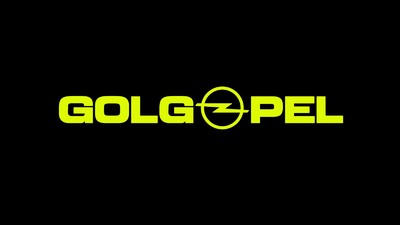
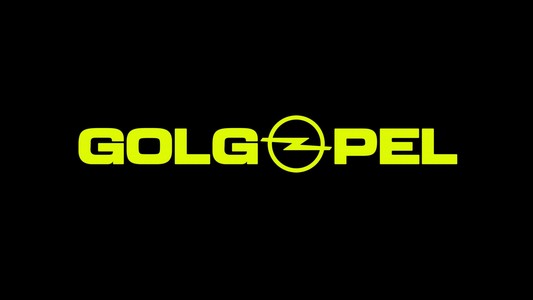
Golgopel, 2019

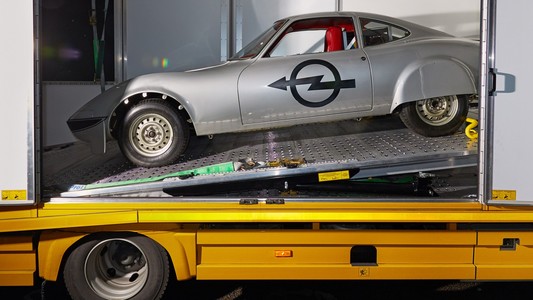
Golgopel, 2019
In terms of development, what would you have liked to know from the outset that you didn’t know and that could have helped you shy away, for example, from 50 % of the shitty projects you initially took on?
I think those shitty projects were necessary. We needed to do really cheap things. They were learning experiences in the sense that they allowed us to hone our technique.
MD
Everything happened step by step, empirically. I don’t think we really made any mistakes – I mean of course we made mistakes, but not fundamental ones. We’re lucky to be where we are today. I think we’re among the super lucky ones.
GH
It’s a hard question to answer, because I don’t feel like we were lacking anything, and there wasn’t a moment when we felt we weren’t going to make it. Our progression has been rather fluid.
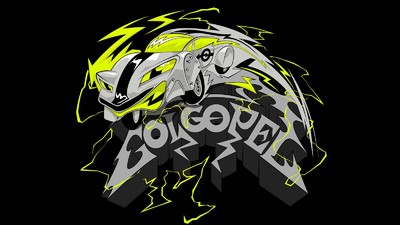
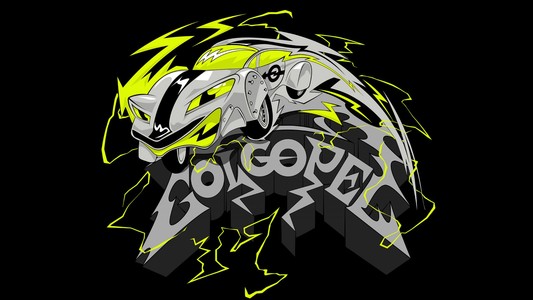
One of the Golgopel logos, 2019. Car illustration by Atelier Pierre Pierre.
Is your client portfolio international, then?
It’s more international than French. Our clients are mainly in China, the US, and London.
GH
And Italy. In France we don’t have a whole lot of clients. Now, we’re about to work with Jacquemus. There’s Nike France with whom we get along well, too, and Red Bull.
MD
Loads of things could happen in the years to come.
How do you see this internationalization of your company?
In my opinion we’re able to do all we have to do here in Paris, we don’t need to open branches elsewhere. In truth, everything gets done by email.
MD
It’s a network, and when you have a meeting you’re already there.
GH
Yeah, that’s cool.
MD
It can make a big difference. Or even being in New York. To be able to snag big jobs that from a distance are impossible to snag. This is what we would like to be moving toward.
GH
We’d like to work a little more with the Chinese, too. I’d love to strengthen partnerships with our Chinese clients. It’s unknown territory. They want to work with us. Incidentally, the way they work is a little freaky. It would definitely increase our cred abroad, increase our visibility and make us more attractive to prospective clients.
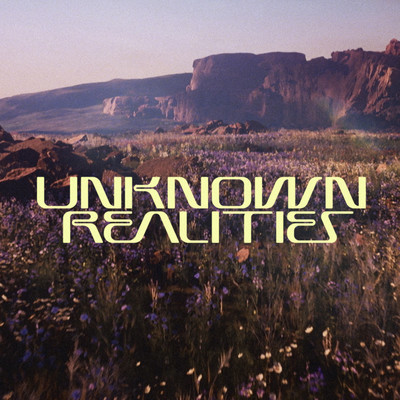
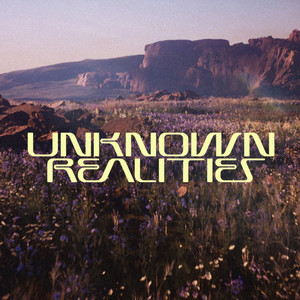
Extract from the music video for Kojey Radical
To turn now to money, you manage and develop your projects. How did you learn to do this? Surely financial management is not something you just learned on the job?
I’m not sure how competent we are as financial managers.
GH
It’s really rather intuitive, but I do my homework, too. My father manages things that are a little like this for his job, so I ask him for advice. You have to invest a little; you have to go see the bankers, buy shares in companies, etc. There’s a way of going about things in France when you’re a tiny bit in the know and your business is flourishing.
MD
I’m not even sure our business plan is optimal, really.
GH
It would be optimal if we were a simplified joint stock company, I think.
With estimates and negotiations, you have developed your economic intelligence. You are also well‑versed in 3D …
It’s all empirical. In negotiations we try to increase our rates yearly, and this can create problems. I don’t think we’re doing as well as we could; we still make a lot of mistakes, such as pitching a project for free. I know certain studios demand payment upfront for a pitch, so we need to work on that, we need to fine‑tune things.
We were talking earlier about creative influences. How about in terms of strategy, development or straight‑up business?
Bureau Borsche is very structured, they’ve been around for a while. I’d like to have that aura. Now it’s impossible, but in the realm of “role models” they are tops.
MD
I identify more, perhaps because we’re in France, with M/M (Paris). Really for me that is a model I’d like to follow, even financially speaking. Apparently they get paid upfront for their pitches, and they show up with just a few pages. We’re too generous, we do eight‑page pitches with mockups and logos that are ready to roll.
GH
But that’s because they’ve been at this game for I don’t know how many years. They have a name.
MD
Those studios are stimulating. In England, Builders Club is more about commercial production. I like that aspect, it’s creative production and though they have a less marked identity, the balance between post‑production and the creation process is cool. All of these studios are on our spectrum.
You were saying that you put together eighty‑page pitches while other folks’ pitches are 15 pages long. Is that how you sell your ideas?
I’m exaggerating a little. We like to be generous. Early on in projects, even before we snag one, we’re already completely onboard because we feel inspired. We need to learn to channel that energy more. We want to immediately immerse the project in our own personal universe. It can be stifling at times, already a little bit too much; we should let certain things remain unresolved, leave a little room for development. When something excites us we go for it. We like to be generous, there are several proposals and we push them.
At the same time, we’re not really going to change our MO, since we happen to like working this way.
VJing for the Golgofest
Do you have a preferred way of presenting your ideas? Or do you adapt to a given situation?
We use the InDesign keynote template.
GH
We like it because it’s well structured.
Always the same structure?
We’ve done things differently at times. But for the biggest pitches we do a kind of storytelling that leads the client to an idea, a didactic preamble leading to the idea.
GH
Sometimes it’s quicker, with a text and an introduction. Some projects don’t need any strategic analysis.
To get back to management, you have interns who become sort of like freelance partners, who then go on to do their own thing. How did you learn that?
Well, let’s say that it got away from us. The first was Scott who subsequently launched Area of Work with another former intern, Amine. Every case is different, predicated on personalities. We have always backed the creative ambitions of those who were receptive to us. Some we even helped with the administrative process you go through to build a company, creating a legal status and so forth, but other things too such as billing, and estimates… Without ever claiming to be in any way a model of perfection!
GH
Our aim is for them to be pleased with their time with us, and that upon leaving us they have learned enough to do their own thing professionally.
MD
In Corpore Sano was a way for us of consolidating these relationships. Some former interns work for us as freelancers with freelancer rates.
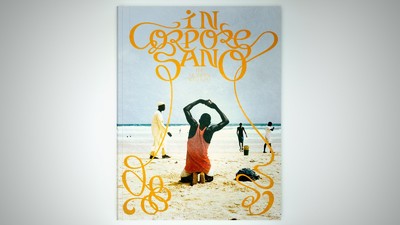
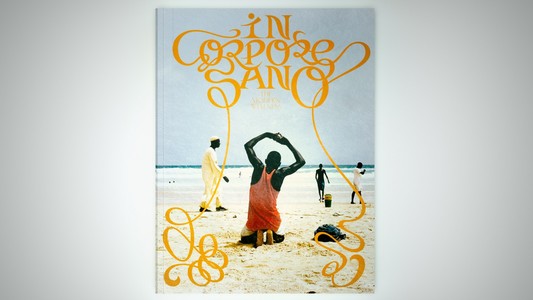
In Corpore Sano Magazine, 2019 / Chief redactor: Pascal Monfort / Talent Curation: Sebastien Peretto / Creative direction: Golgotha / Layout: Virgile Flores
How do you go about recruiting? I imagine you get a lot of job applications.
Around five to ten per week, I think. One or two per day. In fact, I think there were three today. It’s hard, we try to find the time; we try at least to respond nicely as much as is humanly possible.
What do you look for in an intern?
Personality and versatility.
GH
And motivation, too. Sometimes we’ve seen people we didn’t like a lot at first, but whose energy and desire changed our minds.
MD
We’ve seen all types. The most difficult ones are those who are a little too familiar with our ethos and are fanatically devoted to our work.
GH
Yes, for example, the intern who is a little too trend‑oriented and who despite this trend‑orientation makes technical mistakes …
MD
Or else someone who has no culture to back up their work, no baggage. That is to say a person who just knows how to get likes on Instagram and that kind of thing. There is an Instagram danger, it has helped a lot of people make a living but it does tend in terms of trends to push the lowest common denominator. We see a lot of kids fresh out of school whose work is all a bit similar because they are full of that Instagram culture. Then you have others with unique, bizarre personalities that escape us. And even if these personalities are not necessarily our cup of tea, they attract us since we know that that person is going to bring something new to the table and end up carving out his or her place. To get as deeply involved as possible in our projects, technical ability is also important. What we really don’t want is to exclude them from our projects; hence the need for versatility and technical skills.
GH
We had one girl who did a lot of drawings; she showed us some comics she had done, and they were magnificent. She had a big personality and brought the team a lot. Interns are like the lottery in a way. It’s all about feeling.
MD
It’s a pleasure, really, to have students. They are a breath of fresh air and they reconnect us to school because we of course are further and further removed from all of that. After all, strange as it may seem, Golgotha will soon be having a 10th birthday! Sometimes we feel like we’re no longer with it, like we’re getting old. So having young people around is an inspiration, and we have lots of meaningful exchanges.
How does one deal with getting older?
We don’t really think about it. We stay informed in terms of trends, since we’ve always loved that kind of thing. And we also try to exert an influence on what is trending, too.
MD
By not letting yourself be pigeonholed and remaining curious and open to everything, being aware of the exhibitions and everything that’s being done. Going out.
GH
It’s pretty basic, but you have to stay open.


Design work for In Corpore Sano Magazine, 2019.
Would you describe your client management style as rigorous?
We learned our lesson. We got so sick of projects with endless round‑the‑clock back‑and‑forth discussions with the client that we decided to say: “never again”. We learned to be more focused. We had some hardcore situations, with cancelled trips and so forth. But even when you are strict with them, some clients are just hard‑ass people.
How would you assess the current state of the market?
Not too bad, I think. I don’t feel like saying that things are bad. Some professions are really suffering, but for us and for our competitors things are going pretty well. I know lots of projects were aborted because of Covid. I still haven’t exactly understood why, since we work digitally with photos, things one sees on social media. Why cancel those projects?
MD
Because of budget restrictions, I think. Our profession has evolved, after all, since we got out of school. Today things are different. At the very beginning, in 2012, people thought you had to choose between print and multimedia; you couldn’t do both. Except that today with the iPhone all of that has evolved. We arrived at the crucial moment when everything went hybrid and the studios that had been on the scene for a while weren’t prepared for what was coming. Whereas we already had these tools, we knew that a logo could work in animation, and how to make an Instagram filter. All of these facets are nowadays part of the tasks a client is liable to ask a graphic designer to perform.
We really appeared on the scene at the right time. Things happened alongside us in a way, and we were ready.
Are there other developments that you’re a little less fond of?
Instagram is cool, you can use it for lots of things, but at the same time it’s a format. It’s impossible now to do a fashion shoot or layout if it is not packaged for Instagram. It has to work as a story, in a 16:9 aspect ratio…
GH
It’s true that it kind of takes away a little from the creativity of a job when they give you the format or a filter for a photo. We were talking about budget, doing all the formats separately; it’s an enormous amount of work … It ends up imposing a kind of norm on the image; it weakens it a little. It can be constraining at times.
MD
And beyond the question of formats, it has allowed a bunch of graphic designers or wannabe graphic designers to get contacted directly by clients. Before, that wasn’t possible. Now it levels the playing field in terms of demand, so you sometimes find yourself competing against students. I’ve seen clients approach our interns. It’s created a dangerousness in the sense of the highest bidder – or rather the highest number of likes.
GH
There’s always been guys who come along to wreck the market. But more so nowadays.
MD
Let’s just say that we’re lucky to have appeared on the scene before Instagram became so huge. We were already around, we already had our community and were generating buzz. Now if we had to start out today … to get even a little bit of attention on Instagram would be very difficult.
You mentioned your appearance on the scene, when you were doing things that big agencies or production houses weren’t capable of doing. We know that some of the big agencies today are approaching new studios, sometimes even offering to buy them out. Have you been approached in this manner?
I was scouted. They offered me a job but I turned it down. It turned into a request for collaboration with the studio, a kind of fusion. I am always open to collaborations. As for the rest, not necessarily for the moment.
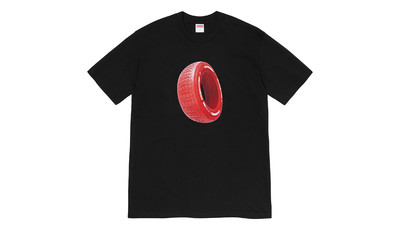
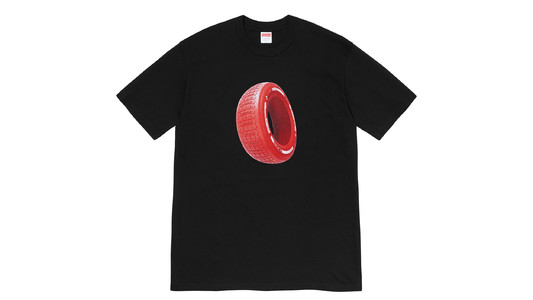
Supreme Tire Tee, 2020
For example, if Developments were to offer you 800 000 € for a 36 % share of your future simplified stock corporation, how would you react?
It would depend on your conditions. Will someone else be involved in decision‑making? We either get 100 % of the creative say‑so, or we’re out. Otherwise it would be like destroying a part of what we have created. Now if someone wants to invest in our company, in our talent, if we retain 100 %creative say‑so, we can always sit down and talk. If it’s in terms of administrative duties or other things of that nature, why not, some are very talented and it could be very profitable for us. But control over the creative process and decision‑making comes first.
Nobody really grasps our point of view and it is out of the question for some outside person to come fuck with what we’ve done.
Outside of buying offices, what investment ideas do you have? Would you for example invest in the studios your old interns are launching?
No, imagine, you’re about to take off, spread your wings and then all of a sudden, boom! Here we are.
MD
It would be like stifling competition.
GH
There has to be someone in this studio with a business sense. Whereas if three creative dudes like us show up there’s going to be a lot of suspicion. I know that if someone had approached us at the beginning of Golgotha we would have been suspicious.
MD
No, but I think that if we were to invest today it wouldn’t be in graphic design. More like in real estate. Which is not to say that I don’t believe in graphic design.
GH
Or in a brand. That kind of partnership might be profitable if we took shares and ran the creative team for five years. We could help it take off and it would be okay to not get paid since if the brand takes off we get a share of the profits.
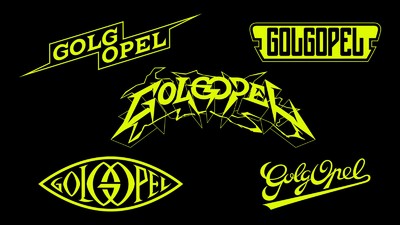

Golgopel, 2019
How in the coming years do you see your profession evolving technologically speaking, in terms of image, graphically, 3D?
Working up close with motion capture has led me to realize that it was becoming more accessible. For Christmas I got a virtual reality headset and it’s cool, probably because I play video games. For the moment I like the Balenciaga creative model, the three latest things they did, the video game which is like Mario Kart, the film, the weird nighttime song, etc. I think they have good creative digital in‑house designers, I’m impressed. They really put their finger on something.
As far as 3D is concerned, don’t you think we’ve reached peak 3D?
We debate this endlessly but we are trying to preserve the image of a creative design studio. We also see the tipping point: there are many students or graphic design graduates who get out of school convinced that you absolutely must have all these 3D skills, and who slowly but surely become complete 3D freaks. They become specialized in 3D and soon become incapable of anything that is not 3D – even a logo. These are 3D artists, they know how to develop a universe but it’s going to be completely detached from graphic design. Whereas the thing that is interesting is to be able to hybridize things, to integrate 3D into a regular video. Though it’s true that graphic design and 3D have a tendency to get mixed up together, which is a good thing.
GH
We like to test our limits without always knowing if the end result is going to be good. You use 3D, 2D, typography, etc. You try. These days, when a client asks for something we try to push for a flatter image that goes against the grain of this idea of 3D that people tend to have in their heads all the time.
Do you ever push a project in one direction rather than another?
We clearly rely on intuition about things that are not necessarily part of the zeitgeist. It’s not necessarily trending but I think it’s a good thing that needs to continue. We made the Ascendant Vierge video with filters and it was a way for us to in fact kill the filter. With an overdose of filters. We wanted to experience the thing while building an Instagram community. We had thought there would be two directors: us and Kevin. We filmed the video with a 100 people or so. It was our way of saying that we are sick and tired of filters. We never do something without taking a stand. Maybe there will be a point of no return and that in three years everybody will leave Instagram for Tik Tok. There are things we experimented with, like for example Golgozap, which was a way to sort of deal creatively without being directly involved in projects, to show a little more of the backstage aspects of our work. It ended up becoming a communication tool without necessarily being a big strategic marketing operation. It was a way of making office work a little more palatable.
Three little questions … Could you work at another time in history?
The middle ages! It would have been a different time but the application would have remained the same if the three of us had met then. Otherwise, the future looks pretty great.
MD
We have decided to be optimistic about the future. I think of the 1960s, the psychedelics.
Are there any books that helped you evolve creatively and professionally?
Internet!
MD
There is one book that struck me: What I talk about When I Talk About Running by Murakami. And yet I’m not into sports, but the mental toughness, the rigour applied each day impressed me.
GH
Me, it would have to be Huysmans, À Rebours (being the very first book that he sees on the shelf across from him, Ed.). But the books I liked during my early years were Gestalten books. And issues of Étapes magazine. And the little Designers guide (Pyramyd). Those things really enriched graphic design culture when we were students. Otherwise, martial arts helped shape who I am: willpower, spirit, never give up, commit to your path, don’t look back.
Is there a piece of advice you could give to a young person starting out?
I come off as some kind of guru to the students who end up with us. I always deliver the same sermon: “If you do something do it honestly. It’s really a question of sincerity, to feel profoundly what you really dig and be able to identify it. In order to stake a claim for yourself in this crazy modern graphic design world, you have to have a strong personality”. When we started out I think we must have been the corniest dudes. We built something with sincerity, with no outside support.
GH
We weren’t always 100% sure of what we were doing, you just have to hold on. You also have to have fun. I know that when I go to the office I’m not just going to work, I’m going to have fun each and every day. I go to the office with joy and pleasure.
MD
If you want to be original and get noticed I think you have to psychoanalyse yourself a little. I know what I like because I took the time to think about it. Before even wanting to launch a studio we talked together about the things we liked, skateboarding, manga, blockbuster movies, books, cartoons, graphic novels, etc. And the anecdote I always tell our interns is about when Guillaume asked if we’d like to launch a studio. We were playing video games. And for me that moment was hyper symbolic. It’s the image I have of our studio. A desire to please, a confrontation, a communion. That is why it’s hard to determine a strategy. It might have turned out to be the biggest mistake of our lives. At the time it was either that or work for an agency.
GH
If you get out of school and go to work for someone, even if it’s going well and you’re happy you will never say to yourself that you’re going to launch a studio. It’s too late. Whereas the opposite is possible: try it out and if you fail you can go work elsewhere, no hard feelings. At least you tried. We wanted to do this, and we did it. It was tough at first. But up until now, it’s been worth it. We’re totally into it.
